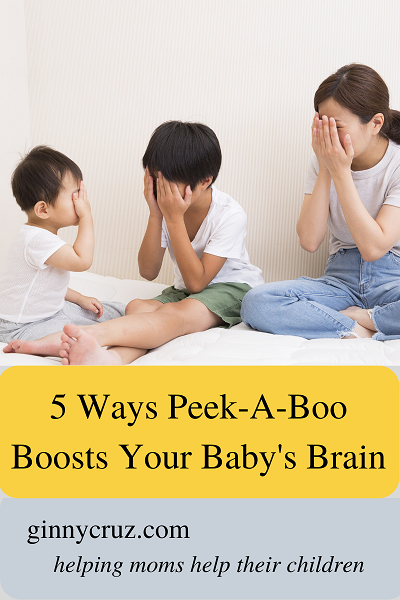5 Ways Peek-A-Boo Boosts Your Baby’s Brain
The peek-a-boo game is ancient. So old in fact, a quick Google search doesn’t even have an answer. But, it’s likely as old as people and we do know it’s played in one form or another in every culture and land. After all, who doesn’t love to hear a baby giggle?
But is peek-a-boo just a simple childhood pastime or is their serious neuroscience and learning packed into it? Let’s answer that question.
Before we get started, take a quick moment and watch this delightful video and then we’ll review what we actually saw.
Watch the Peek-A-Boo Video
Besides the fun of a giggling, happy baby, here are 5 things your baby learns during this game:
- Object permanence is an important concept for children to learn and it begins early—around 4-5 months. First, he sees mommy and then he doesn’t see her. But, she comes back and surprises him. During this, he learns that mommy is there even when he doesn’t see her. This concept carries over into more advanced learning later.
- Motor skills of moving the arms and grasping the cloth. These are early ways your baby gains strength and coordination of the arms and hands to move the cloth and find mommy (the object of his affection).
- Language skills including naming things but also the back and forth question and answer of conversations. This back and forth verbal interaction teaches your baby how conversation works. For example, “Where’s mommy?” Answer: “Here she is.” Question and response is an important building block of language.
- Eye contact and visual tracking of mom. Where is she? He looks for her. There she is. Visual tracking and sustained eye contact are vital for learning to socialize and, later, to manipulate toys.
- Social and emotional skills, such as anticipation, surprise, and laughter. Baby’s love fun and peek-a-boo is fun!
Here’s how peek-a-boo looks based on your child’s age:
0-3 months – baby watches and may smile or coo
3-6 months – you can help your baby’s visual tracking if you “peek” from different spots
6-9 months – baby is curious and may laugh with enjoyment
9-12 months – baby imitates you and may say “boo”
12+ months – baby may cover their own eyes to play
You can travel anywhere in the world and find moms and dads playing peekaboo because children love it! Parents do too. These games seem simple and elementary; however, there is serious brainpower being used. For example, to play a simple game of peek-a-boo your baby uses every part of his brain (vision, hearing, motor, sensory, language, emotion) and both sides of his brain (right and left hemispheres).
So, spend time on a regular basis playing peek-a-boo with your young child and rest easy knowing it is both fun and educational.
Your baby really wants one thing from you. They want and need your undivided attention. Playing peek-a-boo gives them that plus engages their entire brain in a wonderful learning activity.
Want to share a funny baby video? Include it in the comments and let’s all take a moment and giggle.
(Photo from Adobe)

